You need a learning strategy to drive outcomes and achieve undeniable impact
The difference between learning programs that drive outcomes and help their companies achieve undeniable business impact is NOT how good the content is. It’s NOT how great your graphics are. It’s NOT how engaging the facilitators are. And while Bright has an array of elegant and sophisticated platform features, it's as important (and arguably more important) for you to consider factors outside of the platform that will help you get better results... starting with Learning Strategy.
A learning strategy is a necessary first step in the development of a training program, and it can take many forms, however we've found that the best learning strategies can answer the following questions:
- What are the business objectives of our learning program? How will we know it's successful?
- Notice we don’t say ‘learning objectives’. We’ve found the most successful learning leaders speak in terms of business objectives. My goal isn’t to ‘ensure learners understand XYZ, it’s to drive a Net Promoter Score of at least 90% or grow sales closure by 10%. Learning strategies help center the L&D discipline in the same metrics and goals as the rest of the business.
- Who is our learner? Where are they? How many are there? And what skills do we want to help them grow in order to deliver world class customer or patient experiences?
- There’s a certain amount of human centered design and empathy that a well-designed learning strategy should have. The learning strategy to upskill 50 Gen Z team members who are all co-located is going to be wildly different than the learning strategy to train 10,000 associates across the globe. As learning leaders we need to know our stakeholders and design thoughtfully.
- What types of modalities and learning methods should we use to achieve this? What amount of learning do we need to develop and what's the approximate mix of digital vs simulation vs live delivery?
- At Bright, this is where the research and neuroscience of learning comes in. Bright’s position is that in most modern, large-scale corporate settings, the goal should be to make space for as much practice as possible in a hybrid learning program.
- How much will this cost? What are the trade offs between methods?
- Whether you own the budget for your learning program or not, you should be hyper-aware on the overall costs implied by the program you’re using. You can’t calculate ROI without understanding ALL the potential cost drivers in your learning program.
- How can we best deploy this learning? What are the ongoing costs and people/process/technology considerations for delivering and sustaining this strategy over the next couple years?
- At some level, learning leaders should be number crunchers. Particularly for larger programs, you should have a sense of the ‘big picture’ of what it takes to deploy large numbers of people through your programs so that you can properly staff, plan, schedule, and report on what you’ve built.
- What’s the resulting ROI?
- Measuring impact has been the holy grail of corporate L&D for a while now - understanding of whether all those learning dollars actually matter. It’s very possible to do this with relatively few resources - and the Bright platform can absolutely help with that journey.
Because we feel so passionately about this topic, Bright has developed strategy-specific content for learning leaders which can be found in the Bright Academy. We strongly recommend that our customers take this training ahead of beginning to build simulations in the platform. When you complete that course, and your learning strategy is done, you'll be able to say something like:
"We will build 'A' hours of digital learning, 'B' hours of simulations, 'C' live classes. We need to hire 'D' people to deliver or maintain it. We need 'E' additional tech capabilities to deliver our offerings. We need to reserve '$F' to build all this. It will take 'G' months to complete. If done well, we'll achieve 'H.'"
